 W
WJuan de la Abadía el Viejo was a Spanish painter in the gothic Spanish-Flemish style. His son, Juan de la Abadía el Joven, worked with him after 1490.
 W
WLuís Alimbrot, was a Netherlandish painter from Bruges who is known for his work in Spain.
 W
WMartín Bernat,, a Spanish Gothic style painter, active in Zaragoza, where he had a long collaboration with Bartolomé Bermejo. His dates of birth and death are not known.
 W
WAlonso González de Berruguete was a Spanish painter, sculptor and architect. He is considered to be the most important sculptor of the Spanish Renaissance, and is known for his emotive sculptures depicting religious ecstasy or torment.
 W
WPedro Berruguete was a Spanish painter whose art is regarded as a transitional style between gothic and Renaissance art. Berruguete most famously created paintings of the first few years of the Inquisition and of religious imagery for Castilian retablos. He is considered by some as the first Renaissance painter in Spain.
 W
WJuan de Borgoña, was a High Renaissance painter who was born in the Duchy of Burgundy, probably just before it ceased to exist as an independent state, and was active in Spain from about 1495 to 1536. His earliest documented work was painted in 1495 for the cloister of the Cathedral of Toledo. Borgoña’s compositions are well balanced with finely drawn figures in elegant, tranquil poses. They are set either against open spaces leading on to craggy landscapes or against gold embroidered drapery. There were a number of foreign painters active in Spain in this period, including Juan de Flandes. He brought the Quattrocento form of paintings into Castile.
 W
WLluís Borrassà was a Catalan painter. He was employed by the Crown of Aragon and is widely considered to have introduced the International Gothic painting style into the Principality of Catalonia.
 W
WDiego de la Cruz was a Spanish painter who may have been of Flemish origin. He was active in Burgos and the neighboring region.
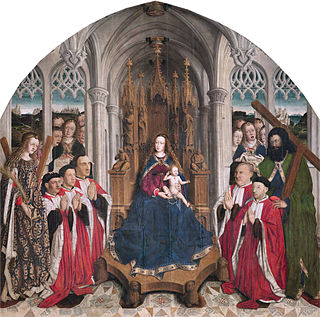 W
WLluís Dalmau was a Spanish 15th-century painter who flourished between 1431 and 1460. He was active in Barcelona from 1428 to 1460 and served the king of Spain in an official capacity. In 1431, King Alfonso V sent him to Flanders to learn the language of realist painting. He made a copy of the Adoration of the Lamb by Hubert and Jan van Eyck; in 1432, this was placed in St Bavo's Cathedral, Ghent. The next year, he had returned to Barcelona. In 1443, Dalmau was commissioned to paint the Virgin of the Consellers altarpiece for the chapel of the City Hall, which he completed in 1445; this is perhaps the only known work of his to survive. In 1445, he also painted a Virgin and Child in the style of Jan van Eyck, which is in the church of San Miguel at Barcelona.
 W
WAlejo Fernández was a Spanish painter best known for his portrait of Christopher Columbus painted between 1531 and 1536.
 W
WJuan de Flandes was a Flemish painter active in Spain from 1496 to 1519. His actual name is unknown, although an inscription Juan Astrat on the back of one work suggests a name such as "Jan van der Straat". Jan Sallaert, who became a master in Ghent in 1480, has also been suggested. He worked in the Early Netherlandish style.
 W
WNicolás Francés was a Spanish painter and miniaturist.
 W
WFernando Gallego was a Castillan painter, and his art is generally regarded as Hispano-Flemish in style. Gallego was likely born in Salamanca, Spain, and worked throughout Castile and Extremadura, most notably in Ciudad Rodrigo, Plasencia, Toro, and Zamora.
 W
WBlasco de Grañén was a Gothic painter active in Aragon from 1422. He became the appointed painter to Juan II of Aragon. His notable assistant, among others, was Pedro García de Benavarre, with whom he made the altarpieces for the monastery of San Pedro de Siresa in 1445.
 W
WJorge Inglés was a painter and illuminator who was active in Castile in the mid-15th century.
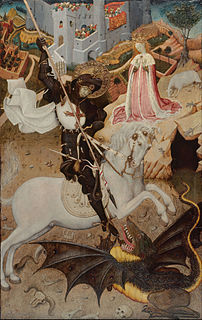 W
WBernat Martorell was the leading painter of Barcelona, in modern-day Spain. He is considered to be the most important artist of the International Gothic style in Catalonia. Martorell painted retable panels and manuscript illuminations, and carved sculptures and also provided designs for embroideries.
 W
WVicente Juan Masip was a Spanish painter of the Renaissance period. He is commonly considered the foremost member of the Valencian school of painters.
 W
WVicente Masip was a Spanish painter of the Renaissance period. His son was Juan Vicente Masip, and his grandson was named Vicente Masip Comes, also known as Vicent de Joanes.
 W
WThe Master of Arguis was an Aragonese artist active in the first half of the 15th century. Stylistically, his work is related to that of Juan de Levi and Bonanat Zaortiga, and is derived from the tradition of the International Gothic in Aragon. His name is derived from a retable of Saint Michael dating to about 1440, now in the Museo del Prado in Madrid; this was once the main altarpiece of the church of Arguis. The painting depicts the victory of Michael over the Antichrist, and focuses primarily on the latter figure, pierced with a lance. Included in the scene are various secular figures, including kings and noblemen, as well as religious figures. At the bottom of the image may be seen a papal tiara and sceptre, symbols of the power the Antichrist claims to wield as the new Messiah. Two other paintings, both dedicated to Saint Anne, are attributed to the Master; one is in Barcelona, while the other, a small triptych, is in the collegiate church of Alquezar.
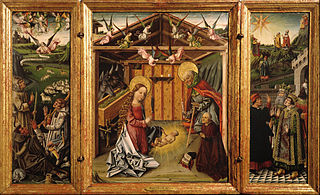 W
WThe Master of Ávila, a painter in the Flemish style of Fernando Gallego, was active in Ávila and surroundings in the middle of the 15th century. The art historian Elías Tormo and others have tentatively identified him as García del Barco, a painter who was known to have been in Ávila between 1465 and 1473. No works by Barco have been attributed with any certainty.
 W
WMaster of the Retablo of the Reyes Catolicos, was a Spanish painter. His dates of birth and death are not known.
 W
WFrancisco de Osona, also Francisco de Osona the Younger, (c.1465–c.1514) was a Spanish Renaissance painter.
 W
WRodrigo de Osona, also Rodrigo de Osona the Elder, (c.1440–c.1518) was a Spanish Renaissance painter.
 W
WFrancesco Pagano, was an Italian painter working primarily in Spain. His date of birth is not known.
 W
WJuan Rexach, was a Spanish painter and miniaturist. His date of birth is not known.
 W
WPedro Romana (c.1460–1536) was a Spanish Renaissance painter.
 W
WPedro Sánchez de Castro, was a Spanish Gothic painter. His dates of birth and death are unknown.
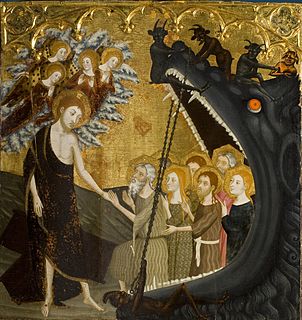 W
WJaume Serra was a Catalan painter. Serra was influenced heavily by a Sienese style introduced by Ferrer Bassa.
 W
WPere Serra was a painter in Gothic-Italian style, who was active in Catalonia in 1357–1406.
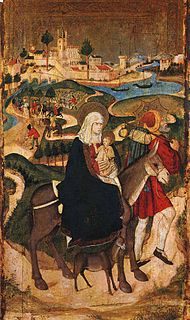 W
WMartín de Soria was a Spanish Gothic painter in the Flemish style; active in the Kingdom of Aragón. His style is related to that of Jaume Huguet and his works have sometimes been confused with that painter's youthful efforts.
 W
WFernando Yáñez de la Almedina, born in Almedina, Spain in c. 1475 and died in Valencia, Kingdom of Spain in 1536, was a Spanish painter. He was one of the most important early Renaissance painters in Spain. Of supposed morisco origin, he travelled to Italy to study fine art, and in the process became familiar with the work of Leonardo da Vinci. After returning to Spain, he collaborated with Hernando de los Llanos on many works.